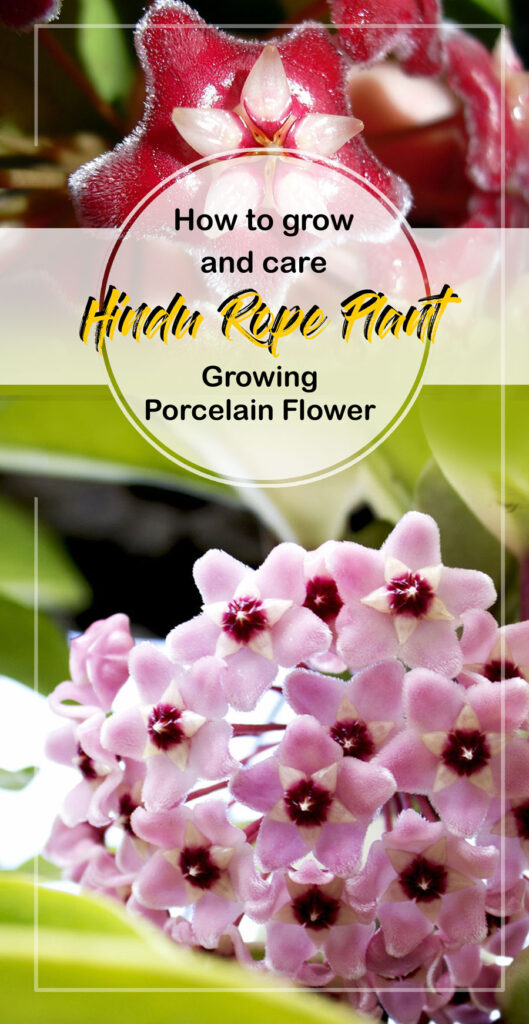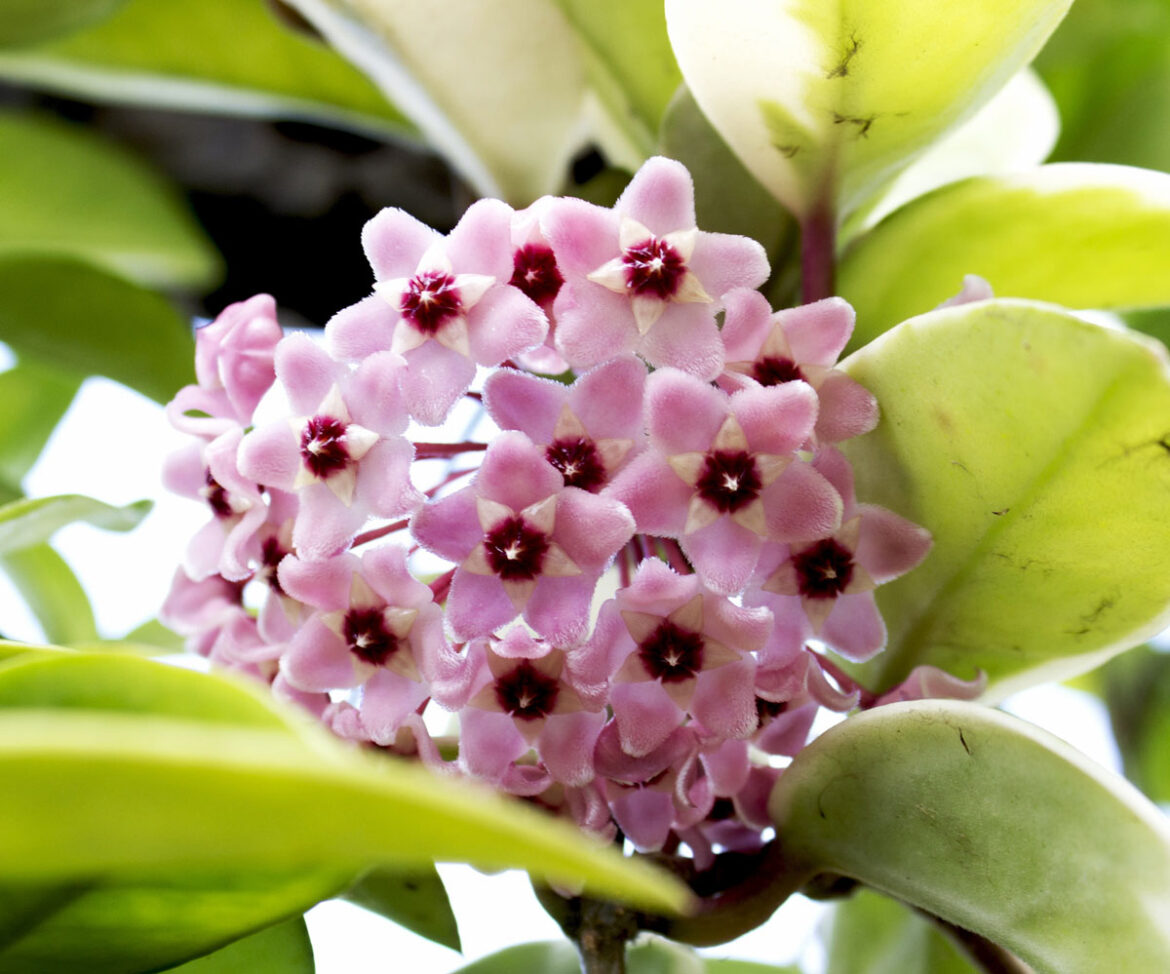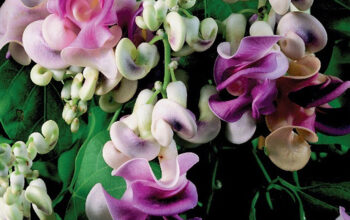Hindu Rope plant (Wax flower)
Approximately 200–300 species of tropical plants are found in the Hoya genus of the Apocynaceae family. The vast majority of hindu rope plant species are found in several Asian countries, including the Philippines, India, Thailand, Malaysia, Vietnam, Bangladesh, Indonesia, Polynesia, New Guinea, and an abundance of species can also be found in Australia. Among the common names for this genus are waxplant, waxvine, waxflower, Porcelain Flower, and hoya.
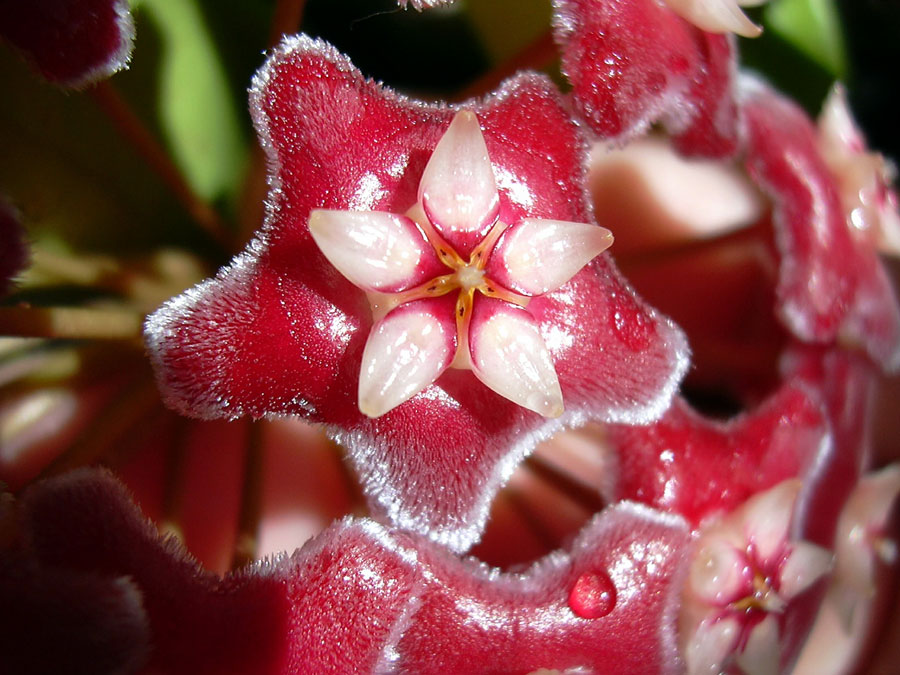
Semi-succulent and perennial, this vine-like plant is renowned for its waxy foliage and vibrant blooms. These plants usually have simple, entire leaves that are arranged in an opposite pattern and are succulent. Leaf surfaces can be smooth, felted, or hairy; venation may be prominent or not, and many species show irregular silvery spots on their leaves. Flowers appear in umbellated clusters at the tips of peduncles in the axilla. In typical flower forms, there are five sacral petals with thick waxy coatings. The petals form a star-shaped structure and are topped with a corona. Many of the species have flowers that range from white to pink; others have flowers that are yellow, orange, deep red, and nearly black. Most of them are fragrant. Some produce nectar in abundance.
Overview Hindu Rope (Hoya)
Scientific Name Hoya carnosa ‘Compacta
Common Name Hoya, Indian Rope, Hindu Rope, Wax Plant, Porcelain Flower, Angel Rope
Plant Type Flowering plant
Sun Indirect Sunlight
Soil Well-drained soil
Soil pH 6.0-7.5
Flower Color Pink, White
Bloom time Spring, Summer
Zone 10- 12 (USDA)
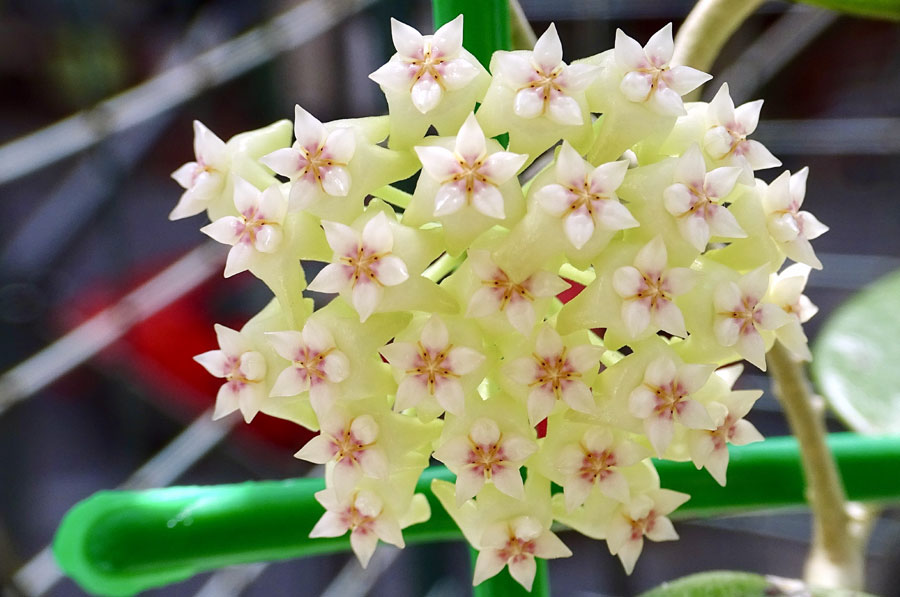
How to Grow and Care Hindu Rope Plant
Hindu rope plants are an excellent houseplant option if you are a novice and looking for something low-maintenance. Seeds of Hindu rope plants are notoriously difficult to grow, and the resulting plants will not look exactly like the originals. Cuttings are the best way to propagate Hindu rope plants.
Propagation
Hoya carnosa “Krinkle Kurl,” the wax flower Houseplant, can be propagated at anytime by taking stem tip cuttings. The Hoya plant forms roots rapidly in damp sand or water when a part of its stem is submerged in water. Dig out an approximately 4-inch piece of healthy stem. Make sure at least two or three nodes are visible on the stem. It is imperative to remove the leaves from the lower section of the cutting in order to give it a chance to root in a well-drained and airy potting soil. Remember that cuttings will take time to root and grow, just as mature plants do.
Sunlight
You should provide your Hindu Rope Plant with at least three to four hours of bright light near a window to ensure its optimal growth. Hindu rope plants should not be placed in a window that is exposed to direct sun for long periods of time. It is best to place in a window facing east or south. If growing the plant outdoors, keep it in very bright light, although it should be kept in indirect light.
Soil
The soil must have fast-draining characteristics and be light and airy. Add perlite, orchid bark, and peat to the soil, this will allow for good drainage and won’t kill the plant. If the soil is heavy, add sand to loosen it.
Watering
Water when the soil is almost dry. The plant needs more regular watering during its active growth period in spring and summer, but only after it has dried out completely in the top few inches of soil. A deep watering will be beneficial at this point, but make sure your wax flower plant is growing in a pot with a good drainage system. Irrigate your Hindu rope plant conservatively, particularly during the dormant winter period.
Temperature and Humidity
The temperature should be at least 70 degrees Fahrenheit during the day and between 60 and 65 degrees Fahrenheit at night. This temperature range promotes the growth of the Hindu rope plant.
If the humidity level is too low, the plant’s leaves will lose their glossy, waxy appearance. Use a humidifier if your home is dry for lush green foliage and beautiful flowers. A pebble-filled tray can stacked on top of the plant pot.
Fertilizer
Spring and summer are the best times to fertilize the Hindu rope plant. Water-soluble fertilizer diluted to one-half the strength is recommended every two months. Choose a balanced, all-purpose fertilizer or one that contains high potassium content.
Pruning
Make sure you trim back leggy stems and dead growth about once a year. It is important not to remove the old stems of a Hindu Rope House Plant as this is where the new flowers will grow.
Read also:
How to grow and care Hoya plants. Growing and care for Ixora houseplants. How to grow Calendula. 11 best Winter flowers for your garden. 9 Best plants for your bathroom. 9 Easy growing herbs for your garden. 8 Climber Plants for Wall Décor. 15 Trailing Plants for your Garden.
For pin:
